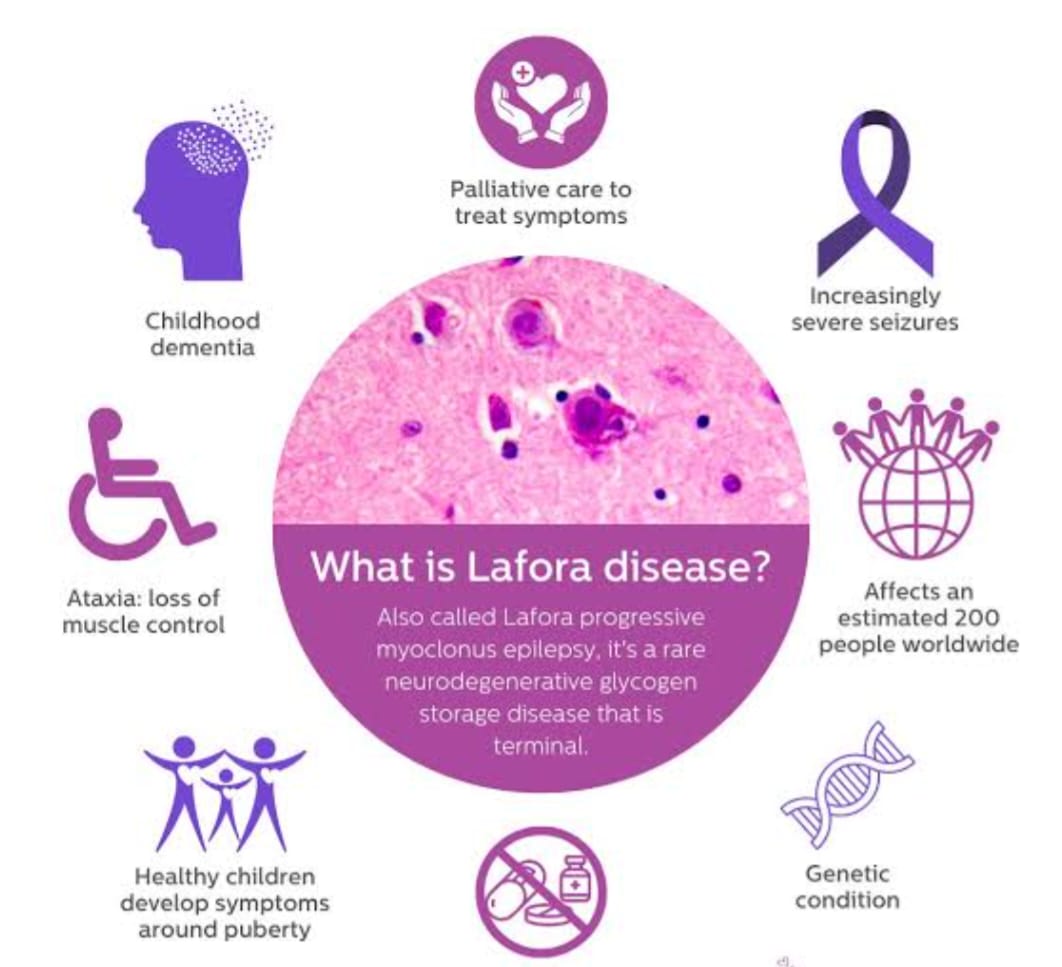Lafora Disease
Lafora disease is a type of progressive myoclonic that is inherited in an autosomal recessive manner and typically presents in previously healthy adolescents with new onset seizures, which are usually myoclonic, occipital, or generalized tonic-clonic.
It's caused by mutations in the EPM2A or NHLRC1 genes, which code for laforin and malin.
Symptoms :-
Symptoms of Lafora disease begin to develop during early adolescent years, and progress as time passes .Prior to this, there is generally no indication of the presence of the disease, though in a few cases, the disease presents as a learning disorder around five years of age.
In extremely rare cases, symptoms may not show at all until as late as the third decade of life, though these cases have slower progression than typical LD. The most common feature of Lafora disease is seizures that have been reported mainly as occipital seizures and myoclonic seizures with some cases of generalized tonic clonic seizures, atypical absence seizures.
Other symptoms common with the seizures are drop attacks, ataxia, temporary blindness, visual hallucination , and a quickly-developing and dramatic dementia. Other common signs and symptoms associated with Lafora disease are behavioural changes due to the frequency of seizures. Over time those affected with Lafora disease have brain changes that cause confusion, speech difficulties, depression, decline in intellectual function, impaired judgement and impaired memory. It is common to see problems with speech, coordination, and balance in Lafora patients.
Lafora Bodies:-
Lafora disease is distinguished by the presence of inclusions called Lafora bodies within the cytoplasm of cells. Lafora bodies are aggregates of polyglucosans or abnormally shaped glycogen molecules. Glycogen in Lafora disease patients has abnormal chain lengths, which causes them to be insoluble, accumulate, and have a neurotoxic effect.
Diagnosis :-
Lafora disease is diagnosed by conducting a series of tests. To confirm the diagnosis, an EEG, MRI, and genetic testing are needed. A biopsy may be necessary as well to detect and confirm the presence of Lafora bodies in the skin.
Homoeopathic Treatment: -
Homeopathic medicine works out individualization here and treat the person.
The Food and Drug Administration (FDA) has approved homeopathic medicine considering as very effective in Lafora Disease treatment. The various expression of disease can be managed effectively, gently, and safely with homeopathic medicine.
Homeopathy has reasonably good treatment to offer for Lafora Disease, which works at Various levels and can treat the disease very well by simply riding on the waves of the brain and mind of the person.
Homeopathic medicine is strongly recommended.


